COE Instructor Bag of Tricks
COE Instructor Bag of Tricks
Icebreakers, Quick Games, and Meaningful Debriefs
The COE Bag of Tricks is a resource for ensuring that every COE class includes meaningful conversations that bolster the student experience. The goals of this resource are to…
- Increase feelings of inclusion and belonging while building a supportive community
- Offer guided reflection time
- Develop leadership skills in both students and instructors
Games by Category
- Group Contract
- Known/Unknown
- Nalgene Fill
- Group Map
- Linking
- Name Catch
- Two Truths and a Lie
- Wampum
- Mosquito Tag
- Ping Pong
- Splitting Line
- Categories
- Come to My Party
- Fortunately, Unfortunately
- Hot Seat
- My Perfect Day or My Special Place
- Chocolate
- Flash Flood
- Gotcha
- Helium Tent Pole
- Look up/Look down
- Signs
- Snowball War
- This or That
- Vegetable Off
- Birdy on a Perch
- Knights and Dragons
- Evolution
- Ninja
- Periscope Tag
- Fear and Hope in a Hat
- High Tide, Low Tide, Forecast
- Pairs Debrief
- Pass the Love
- Rose, Bud, Thorn
- Snapshot
- So What, Then What, Now What?
- Bracelet Ceremony
- Pin Ceremony
- Tap Someone Who
FIRST DAY ACTIVITIES
GROUP CONTRACT
This is a great first day program, as it sets the mood for your trip. In the group journal, a separate clean sheet of paper or a piece of cloth material have the group write a contract for your trip by listing what they do and don’t want, how they will deal with problems, group goals for the trip, and anything else they want to include. Then have everyone sign it. If this is done on a piece of cloth material, it is nice to carry with you and display on the trip. It’s a reminder of what the group decided on and it can become a sort of rallying object for the group, something they are proud of.
KNOWN/UNKNOWN
The leader has the group visually note someone in the circle who is “known.” Then the group will visually note someone in the circle that is “unknown” to them. The leader then instructs the group to move around and try to put the “known” person between the unknown and themselves (the group tends to space out). After a few minutes, tell the group to freeze. Have them look around and note the arrangement of the group and if they were successful in their mission. The next instruction to the group is to now try to put yourself between the “known” and “unknown” (everyone typically shrinks in). After a few minutes have the group freeze and take note of the arrangement of people. Circle up and ask the group if anyone noticed a difference between the two (someone may have noticed the group spread out and shrink).
This activity can be an opener to begin to talk about goals and expectations of the day, ie., Moving away from what is “known” and comfortable, closer to the “unknown,” and getting out of your comfort zone…
NALGENE FILL
This is a simple one for the first day of a trip; it would do well in combination with the Group Contract. Have everyone bring a water bottle to Evening Meeting and you bring an empty one. Talk about how this is THEIR trip and they’ll only get out of it what they’re willing to put in. Then have everyone pour some of his or her water into the empty one (symbolizing the trip) as they say what they want from the trip. Eventually the Nalgene will be full and you can then use it for Crystal Ball.
NAME GAMES
FRIENDS LIKE ME
Have everyone stand in a circle with something to mark their spot. (A single shoe works great or a pine cone.) One person will stand in the center of the circle and introduce themselves (the person in the center of the group will not have a space marker in the circle, so that there is one less spot in the circle than the total number of participants). They then say “Friends like me…” and some kind of fact that pertains to them (are wearing flip flops, have a ponytail, are excited to go camping, etc.). Everyone who that fact also applies to must move to a new spot in the circle that isn’t right next to him or her. The person in the middle also tries to find a spot. The person left without a spot becomes the new person in the middle and makes a new statement for the group.
GROUP MAP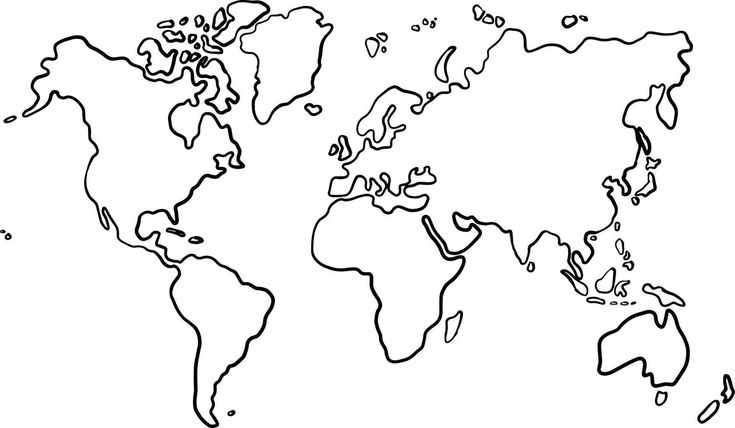
Make a map of the world on the ground by drawing in the dirt, using a rope or by just having them use their imaginations. Point out North, South, East, and West. You then make a series of statements and have them stand in the place relevant to them.
Here are some ideas:
- Stand in the place you were born
- Stand where your best vacation was
- Go to where you most want to visit
- Go to the place where you favorite kind of food is made
This helps the group begin to see similarities within each other. Have people close to each other introduce themselves and share a little bit about why they are standing where they are.
LINKING
The facilitator begins by stating we are going to do an activity where we find commonalities among us and find out what links us together. I will start by sharing a few things about myself. If there is something that you can relate with I invite you to come up and link arms with me and share something about yourself. We will continue until we are all linked together.
NAME CATCH
Props: Something small to throw (ball, apple, hacky sack, etc.), stopwatch (optional)
With the group in a circle, give the ball (or something to toss) to one person. This person says their name and then the name of someone else in the group; they then throw the ball to that person. This continues until everyone has received the ball once and it returns to its original owner. Everyone should remember whom he or she received the ball from and whom he or she threw it too, so the pattern is established. Once a pattern is well known, or you have gone through the entire group a few times, you can have the group break apart and run around in a designated area still tossing the ball and reciting each other’s names or increase the number of balls being used.
TWO TRUTHS AND A LIE
Each person says their name, two truths and one lie about themselves. Everyone else has to try to guess the lie.
WAMPUM
Props: A pool noodle or something long and soft that you can tap people’s feet with.
Have the group sit down with their feet in the middle of the circle. Leave enough space in the middle of the circle for one person to stand, holding the pool noodle.
The people seated around the circle are trying not to get tagged by the pool noodle. One person will start by saying their name and then the name of someone else in the circle. That person whose name was just said becomes “it” and if the person who is standing with the pool noodle can tap them on their feet before they’ve said their own name and then someone else’s name, they switch spots. The seated people will keep trading off on who is “it” while the person in the middle tries to tag the person whose name was just called. If the person with the pool noodle successfully taps the person who is “it” they pass off the pool noodle and take a seat in the circle and then start off the next round by saying their name and then someone else’s name.
TALKING GAMES
CATEGORIES
The first person will choose a category. Some examples are: types of dogs, sports, capital cities, fruits, bicycle brands, house plants…
They will say something that is in this category and then everyone else must say something different that fits the category. If someone gets stumped, that round ends and a new category is picked. The goal is to come up with as many words as possible in the category or go around until everyone has said one item that is in the category.
COME TO MY PARTY
This is an activity where there is a key to unlocking what is allowed to be brought to the party.
The facilitator says “I am going to have a party and I’d like everyone to attend and while we want everyone to attend there are certain things that we want and do not want at the party. I will bring some apples to the party.” (In this variation, the “key” is that everything that comes to the party has to have two letters together, like the “pp” in apples.)
Group members will suggest something that they want to bring to the party. If someone asks if they can bring cookies to the party, the leader will say, “Yes! We would love it if you brought cookies to the party.” However, if they asked about bringing brownies to the party the leader would say “No, you may not bring brownies to the party.”
If some people are having a hard time figuring out the key, the leader might say, “ Well you could bring root beer but no cola.” This continues until everyone has figured out the key.
Variation: Another key could be that the word you suggest has to begin with the last letter of the previous word. So if the leader starts with “pies,” the next item could be “salmon” and then “nutella.”
FORTUNATELY, UNFORTUNATELY
This talking game comes from the Improv world. You’ll be telling a story with the group but every person has to alternate starting their sentence with “fortunately” or “unfortunately.” So the first person might say, “Unfortunately it was a rainy day.” And the second person goes, “Fortunately, I had prepared for the weather and I brought an umbrella!” Pretty soon the story becomes very funny and you just keep it going as long as you want.
HOT SEAT
You will want your participants to have a good base and be comfortable with each other before pulling this one out of your bag. Get everyone circled up with one person selected as the center of attention. This person is now in the Hot Seat. While in the Hot Seat you have to talk about yourself for the duration of a set period of time (usually 5 or 10 minutes). I like to ask for volunteers instead of sending it around the circle. Then it allows people to step up when they are comfortable, instead of being pushed into something they are not quite ready for. You can also spread this out across the trip; maybe doing two a day at meals for the duration of the trip.
MY PERFECT DAY or MY SPECIAL PLACE
Have everyone describe their perfect day. This can be a good one to get the group to open up and share a little about themselves.
Variation: Have everyone share their favorite place in nature in as much detail as possible (sounds, sights, tastes, smells, temperature, how it makes them feel, what it makes them think of, etc.). This is another great activity that allows people to learn more about each other.
QUICK GAMES
CHOCOLATE 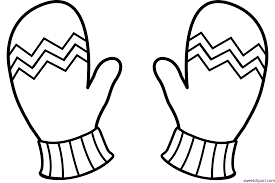
Props: Chocolate bar in the middle of the table, mittens for both hands, hat/beanie, a spoon for each, 2 coins or dice. (Have extra chocolate for the entire group afterward.)
Have the group sitting in a circle around a table. Place the chocolate bar, still in its wrapper, in the middle of the table. Give the coins or dice to one person; they flip them to get both, “heads” or “snake eyes”. Once they get the right roll/flip, they have to put the mittens and hat on as quickly as possible and try to open the chocolate. Once open they have to try to eat it with the spoon (for sanitation purposes you could have each person bring their own spoon). They need to try to eat it quickly because as soon as they get their flip or roll, they have to pass the die or coins to the next person, who then tries for the same roll. As soon as the next person gets the roll/flip they need, you have to drop everything and pass it to them.
FLASH FLOOD
The leader calls out “flash flood” and then starts to count down from 10. Everyone must get up at least 1 foot off the ground in order to escape the flash flood. This is a great quick game for playing on trails with lots of stumps, trees and fences.
GOTCHA
Everyone forms a circle, either standing or sitting. Each person has their right hand’s index finger resting in the palm of the person sitting next to them and their left hand palm up to their other side. The goal is to try to and grab the finger of the person next to you without yours being caught.
If you catch someone yell “Gotcha!” You can make it harder by switching hands, or setting up the same overlapping system with your feet and having the group try to catch/escape with their hands and feet at the same time.
HELIUM TENT POLE
Props: Hula hoop or tent pole
The hoop is filled with helium! Everyone in the group puts out their pointer fingers and holds them under the hoop. The group must lower the hoop to the ground while always keeping both fingers in contact with the hoop.
LOOK UP / LOOK DOWN
Instruct the group to form a circle. The facilitator asks the group to look down at the ground and then to non-obviously look at another team member’s shoes. There are two commands that the facilitator can give, “look up” and “look down”. On the command “look up” everyone should look at the eyes of the person whose shoes they were looking at originally. If they lock eyes with that teammate both have to loudly scream “Ahh!” and then they are both “out.” They take a spot outside the circle and observe.
When instructed to “look down” teammates look down at the ground again and find another pair of shoes to look at. Play continues until two remain and they get each other out.
SIGNS
Sit in a circle. Each person will choose a “sign” for themselves, (ex: touching your nose, peace sign, wink, etc. Something discreet but noticeable enough and QUIET.) Go around the circle a few times and have everyone show what their sign is so that the whole group remembers. Now name one person as “It” and send them away while you decide who will start out with The Sign. Once you’ve decided that, bring the person back and have them stand in the middle of the circle. Pass The Sign by making the personal sign of the person you want to pass it to. They acknowledge that they have received it by making your sign. Until they have received it, you still have it. The person who is It tries to guess who has The Sign. If they get it right, then the person they called out becomes It.
SNOWBALL WAR
Everyone introduces themselves. Then, have each person write something on a piece of paper (examples: best vacation in 6 words or your perfect date). Next crumple it up to make your snowball and start your war. Throwing the paper around for 30 seconds. Then have everyone pick up one piece of paper. Go around and have each person read aloud what is on the paper, then try to guess whose it is.
THIS OR THAT
The facilitator will need a list of questions (they can build off the ones below). For each question indicate which side people should move to for their preference. The questions should provide a clear choice between two things. You can either ask people to move as individuals or try to come to an agreement as a group about which thing they prioritize or prefer.
|
|
VEGETABLE OFF
Like a duel, 2 people stand back to back and walk 5 paces away and stand at the ready. A third person yells out the name of a vegetable. The 2 people then have to immediately form their bodies into the shape of that said vegetable named. The person who calls the vegetable is the judge of who wins.
WARM UP GAMES
BIRDY ON A PERCH
Have students pick a partner. From there, one chooses to be the Birdy, and the other is the Perch (it is usually helpful to have the smaller person be the Birdy). Have your group form two concentric circles, all Birdies on the outer circle, all Perches on the inner circle. Have the whole group sing a song of the leaders’ choosing (or you can bring a boom box and play music) while the circles walk in opposite directions (i.e., outer circle walks clockwise and inner circle walks counter clockwise). When ready, stop the music and yell out a position (or series of them). The last pair to get into that position (or the last in the series, or that doesn’t do it right) is eliminated. Shrink the circles as the group gets smaller. When only two pairs remain, have them come together and each put a hand in the middle, no partners next to each other, and walk like that. Before the game begins, make sure to go over each position, and safety rules about contact.
Positions:
Birdy on a Perch: Perch kneeling on one knee, Birdy standing with their foot on Perch’s knee and fluttering their arms like wings.
Monkey on the Back: Birdy person jumps on the back of Perch.
Lovers Leap: Birdy jumps into Perch’s arms.
EVOLUTION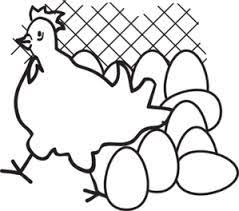
Everyone starts out as an egg and finds a partner to play rock paper scissors. The winner evolves into a chicken and must find another chicken to play, while the egg stays an egg and must play another egg. If you lose you de-evolve into the stage one below you. Once you get to Dinosaur you’re done.
Egg: crouched on the ground as round as you can get.
Chicken: standing, flapping your wings and clucking if you want.
Dinosaur: standing with T-Rex arms.
IMPULSE 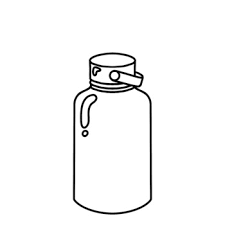
Split the group into two lines; sit them down side by side with a water bottle behind them. Have each person hold the hand of the person in front and behind him or her. Once the lines are set up, have each person EXCEPT the person at the front of each line close their eyes. A leader standing at the front of the lines flips a coin so that only the front person in each line can see it. If the coin lands on heads, the person at the front of the line will pass a pulse by squeezing the hand of the person behind. Each person follows suit and squeezes the hand of the person behind them until it gets to the last person in line. The last person in the line lunges backward for the water bottle. The winning line rotates, so that the person who was in back moves to the front. If a fake pulse gets passed when the coin did not land on heads, then the team who passed the fake pulse has to rotate the opposite direction. The goal is to have the first person rotate all the way back through the group to their beginning position. To make it extra tricky, you can place the water bottle in different places so the last people in each line have to search for it.
KNIGHTS AND DRAGONS
Have each person silently choose one person to be their knight and one to be their dragon, without telling anyone who is who. The objective is to keep your knight between you and your dragon at all times. Each person in the group will be running around wildly trying to keep their knight between them and the dragon.
NINJA
Start out in a circle, then all at once have everyone jump backwards and assume his or her favorite “ninja” position. Take turns around the circle, each person getting one movement to try to touch someone else in the circle on the arm (elbow to fingers). That person has one movement to try and avoid them. Both players have to remain in the position that they end up in. If your arm is hit, it is out of play and goes behind your back. Once both arms are hit, you are out. The “turn” is passed in the set order of the original circle, so if someone jumps across the circle their “turn” does not change.
PERISCOPE TAG
Cross your arms over your chest right on top of left, now lift your left arm to cover your left eye. If this is done correctly, you should not be able to see your extended right hand. Now play tag!! Everyone is trying to tag everyone with only his or her extended right hand.
SPLITTING GAMES
MOSQUITO TAG
Split into pairs of about equal body size. Join hands with your partner (left to left or right to right) in such a way that you can grasp them tightly while pointing your index finger towards them. While keeping hold of their hand, try and poke them with your finger. Can be played tournament style.
PING PONG
Group pairs up and one person is ping, the other is pong. Together with your partner, ping’s will jump saying “ping” and then pong’s will jump saying “pong”. Next round pairs will pair up with another group and do the same. The pairing up will continue on until there is one massive Ping side and Pong side.
SPLITTING LINE
Have everyone stand in a line. Tell them to jump to either their left or right on your command. Then before they can think too much have them jump. This will usually give you a close-to-even split and then you can even it out.
DEBRIEFING
- Compassion for others
- Pushing past perceived limits
- The value of failure
- The power of diversity
- Environmental appreciation and stewardship
FEAR AND HOPE IN A HAT
Props: Everyone needs two small pieces of paper and a writing utensil.
On one piece of paper, write a fear you have (for the trip, the next school year, or whatever applies to your group) and a hope you have. Fold them up and place them in separate containers (hats work well). Once everyone has finished, pass both containers around and have each person pick one out (if they get their own put it back and choose another).
Have each person read the fear and discuss what advice you would tell someone who came to you with that fear. Then read the hope and discuss, if warranted. Go around the circle. You can choose to do all of the fears together then follow with the hopes or however you think will work with the group best. It’s nice sometimes to end on a hopeful note.
Debrief: Very often the same fear comes up multiple times. This goes to show that we’re all in the same boat and feel similar so don’t feel like you’re the only one who feels some way or be embarrassed about how you feel. It can be very powerful to let the participants give advice and kind words about the hopes and fears. Be careful not to over lead this one and don’t be afraid of the quiet; use it.
HIGH TIDE, LOW TIDE, FORECAST
Ask everyone to think of their highlight (high tide), the low point or challenge (low tide) and the thing that they look forward to or hope to do in the future (forecast).
PAIRS DEBRIEF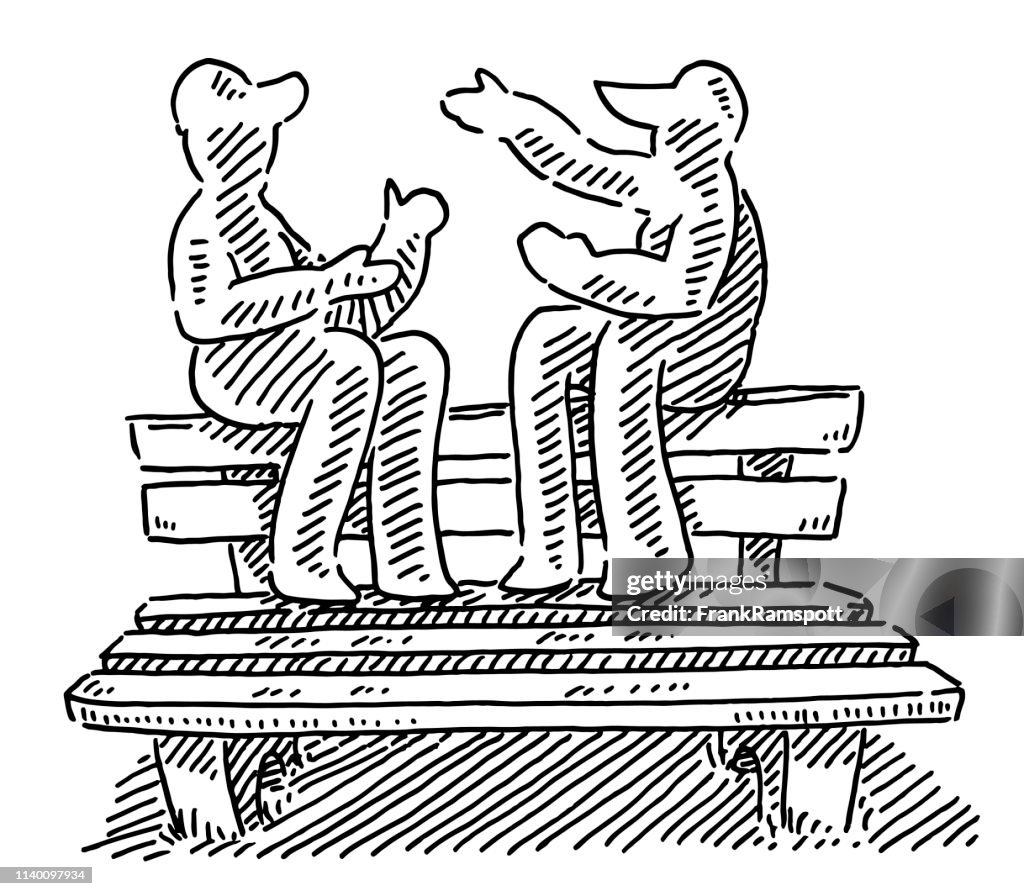
For introverted people, a pair debrief might be a lot more effective and powerful than a big group debrief. Ask everyone to pair up or make a group of three. In those small groups, discuss the day, “What worked? What didn’t work?”
Ask some groups to share what they talked about. Then invite them to return to their group and set a goal for the next session together. The pairs will support each other to reach their goals next time, so ask them to talk for a while and figure out what kind of support they need. “Do you want a cheerleading team? Do you want someone to quietly encourage you with a pep talk and then check in later?”
PASS THE LOVE
Everyone sits in a circle and turns to their left to see who is next to them. One person starts and tells the person to their left what they appreciated about them during the course. That person takes the compliment, sits with it and then shares what they appreciate about the next person in line. Challenge people to hold onto the compliment and not deflect, defend or diminish it. Just say “thank you” if you feel moved to say something.
ROSE, BUD, THORN
Ask everyone to think of their highlight from the day (rose), the challenge (thorn) and the thing that they hope to improve or look forward to (bud). You might ask the group members to make their hand into a fist and put it in the center of the circle to indicate that they have constructed their ideas. This takes away some pressure and gives people who need more time to think a space to do that.
SNAPSHOT
Ask everyone to reflect on the day or the course. If you could take a photo of some moment that really spoke to you or exemplified the course, what would it be? Have everyone explain what their snapshot would be.
SO WHAT, THEN WHAT, NOW WHAT?
Recap the day by asking the group what happened. Make sure to keep people talking about just the process and responding to the simple facts from the day. “What did you observe? What events occurred? How did that feel for you?” This should be a discussion of the process and it should be objective.
Next, ask “then what?” More specifically, “what does that mean? How did you respond to that situation? What was significant?” This question should get at what people learned. What difference did events in the process make on the outcome? People might talk about feelings and analyze what went on.
Finally ask, “now what?” You might ask, “How can you apply what you learned?” This is a chance to discuss what comes next. Where do we go from here? What should we do differently? What goals do we have based on this?
CLOSING CEREMONY
BRACELET CEREMONY
Using lengths of paracord you will make bracelets for each person in the group, yourself included. Measure the bracelet around participants’ wrist, then cut and melt the ends together around each person’s wrist. Be really careful not to burn the participant! It can help to slide a metal spatula between the flame and the participants’ wrists, this keeps the metal between the flame/melting rope and their skin. Make sure to smooth the melted edges down before they harden. The leaders put the bracelets on participants one at a time, and while this is happening, the group gives compliments and thanks to the person receiving the bracelet (ex. “Thank you for talking to me during my climb, with your support I was able to push myself through the tough spot”). Compliments are positive, and the person receiving the compliments can only say “thank you” (similar to Spotlight). You can build this up throughout the trip by using the paracord for various things. At evening meetings you can pass an end around the group to get everyone’s attention, once everyone is holding the rope the groups can begin the activity. By tying the ends together you can make a complete circle of rope; have everyone hold onto the rope and lean back a little (not all the way back, just enough to feel the pressure from the entire group). You as a leader let go of the rope, then release of tension will be felt by the entire group. You can then talk about how it is going to take the entire group’s help to make this trip the best it can be. If anyone decides not to be a part of the group or not to participate in something it will affect the entire group.
PIN CEREMONY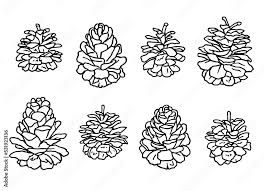
You’ll need an object that everyone will receive to celebrate their accomplishment. This might be a pin, or a special rock, or a sticker.
Put all the objects in the middle of the circle and ask everyone to think about what they are “taking” from the experience. When they have that thing in mind they can reach in and take the object and share what they are taking with them (metaphorically).
Variation: After everyone has taken an object, ask them to think of someone that they want to appreciate. One by one, every person will give their object to someone else and share what they appreciate about this person. Everyone should get an object at the end. You might also invite other people in the group to share something about the person currently receiving the object.
TAP SOMEONE WHO
Write numbers on scraps of paper and have everyone choose one (and keep it to themself). They then sit in a circle, well spaced out, with their backs to the center. Leaders are in the center of the circle and ask two numbers to please rise. All of this is done in silence. Leaders then give instructions to “Tap someone who…(did something epic/made you smile/you want to get to know better/made you laugh/you respect/helped you/went out of their comfort zone). Do about five then have them sit and call the next two numbers. Repeat until everyone has gone. Leaders, if someone isn’t getting tapped feel free to step in and do some taps yourselves.
Debrief: Moment of silence and reflection. “We did this anonymously, but sometimes it can be really good to hear from someone how you affected them, so if you want to and you’re comfortable with it, find some time to talk at some point.”
|
|
|
|
Would you like to make edits to this resource? Contact scf32@cornell.edu
Click here to download the PDF version of the Instructor Bag of Tricks (1.24 MB)
